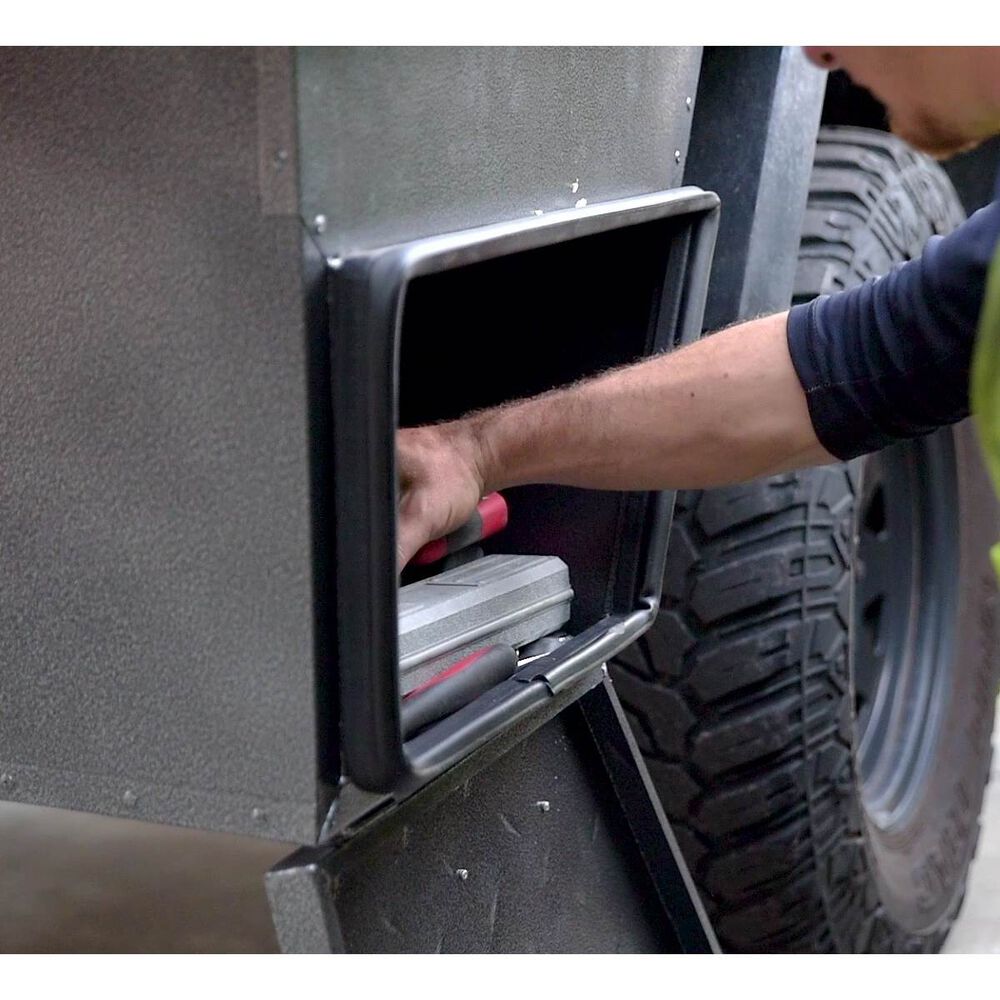Under tray tool boxes are essential for many professionals who rely on them to store their tools and equipment securely. However, like any other mechanical or storage equipment, under tray tool boxes can develop malfunctions over time. This article will discuss how to identify common malfunctions and provide practical steps to resolve them. Ensuring that your under tray tool box continues to provide storage space for your tools and remains in optimal working condition.
Identifying Common Malfunctions
Latch or Lock Issues: One of the most common faults is related to the latch or locking mechanism. If you have trouble opening or closing your toolbox, inspect the latch and check for any debris or damage. Lubricate it with a silicone-based lubricant to ensure smooth operation. If the latch is severely damaged, consider replacing it.
Leaking Seals: Under tray tool boxes are often exposed to the elements, which can lead to seal damage. If you notice water or dust entering your toolbox, examine the seals for cracks or gaps. Replace damaged seals promptly to maintain the waterproof integrity of the toolbox.
Rust and Corrosion: Rust can weaken the structure of the toolbox and compromise its longevity. Regularly inspect the exterior for signs of rust or corrosion. If you spot any, use a wire brush to remove the rust, apply a rust converter, and then repaint the affected area to prevent further corrosion.
Hinge Problems: Faulty hinges can result in a sagging or misaligned lid. Check the hinges for loose screws or damage. Tighten loose screws and replace damaged hinges if necessary to ensure the lid aligns properly.
Dented or Damaged Exterior: Accidents can lead to dents or other damage to the toolbox's exterior. If the damage is minor, you can often use a rubber mallet to gently hammer out dents. For more extensive damage, consider professional repairs or replacing the toolbox.
Resolving Under Tray Tool Box Malfunctions
![500+ Tool Box Pictures [HD] | Download Free Images on Unsplash](https://media.istockphoto.com/id/1361116447/photo/close-up-of-a-repair-woman-with-tools.webp?b=1&s=170667a&w=0&k=20&c=m2gHqufXy9v2x0YGU-QJFKEv9d9nBAgo4VvVcvgc_84=)
Regular Maintenance: The key to preventing faults is regular maintenance. Clean your toolbox regularly, removing any debris or dirt that can cause problems. Lubricate moving parts like latches and hinges to prevent wear and tear.
Replacement Parts: If you identify damaged components, such as locks, seals, or hinges, source replacement parts from the tray toolbox manufacturer or a reputable supplier. Ensure the replacements are compatible with your toolbox model.
If you are looking for a more secure and durable lock for your trailer, tool box, or other cargo container, a whale tail lock is a great option. It is important to choose high quality locks for your needs to ensure the best possible security.
Seal Replacement: To address leaking seals, carefully remove the old seals and clean the seal channel. Install new seals, ensuring a proper fit. Test the waterproofing by spraying water on the toolbox's exterior.
Rust Prevention: To prevent rust, consider applying a protective coating or paint designed to inhibit corrosion. Regularly inspect and touch up any areas prone to rust.
Professional Repairs: If you encounter complex issues beyond your expertise, consider seeking professional repairs. Experienced technicians can diagnose and fix faults more effectively, ensuring your toolbox's functionality and safety.
Identifying and resolving malfunctions in your under tray tool box is essential to maintain its usage. Regular inspection, maintenance, and prompt action when issues arise will ensure that your tool box remains in good working condition. Following the tips outlined in this guide will keep your under tray tool box working smoothly and protect your valuable tools and equipment. Remember that a little care and attention today can extend the lifespan of your tool box significantly.
Looking for a premium under tray tool box with a variety of sizes and choices? Explore our wide range of under tray tool boxes.
Want to learn how upgrading locks will benefit you? Check out our post about Exploring the Key Security Components of Whale Tail Locks. Discover how these locks increase the safety of your tools and equipment.

